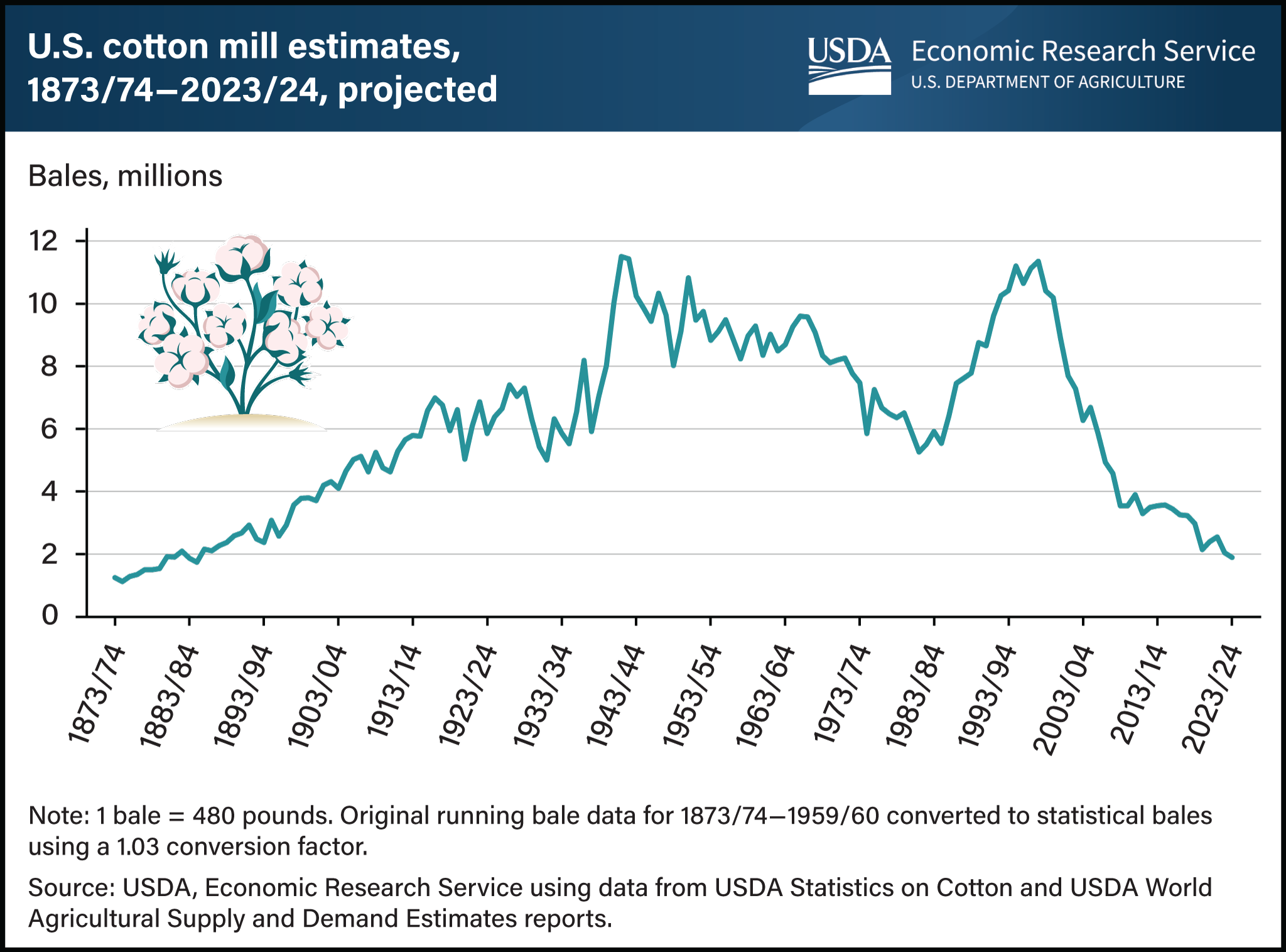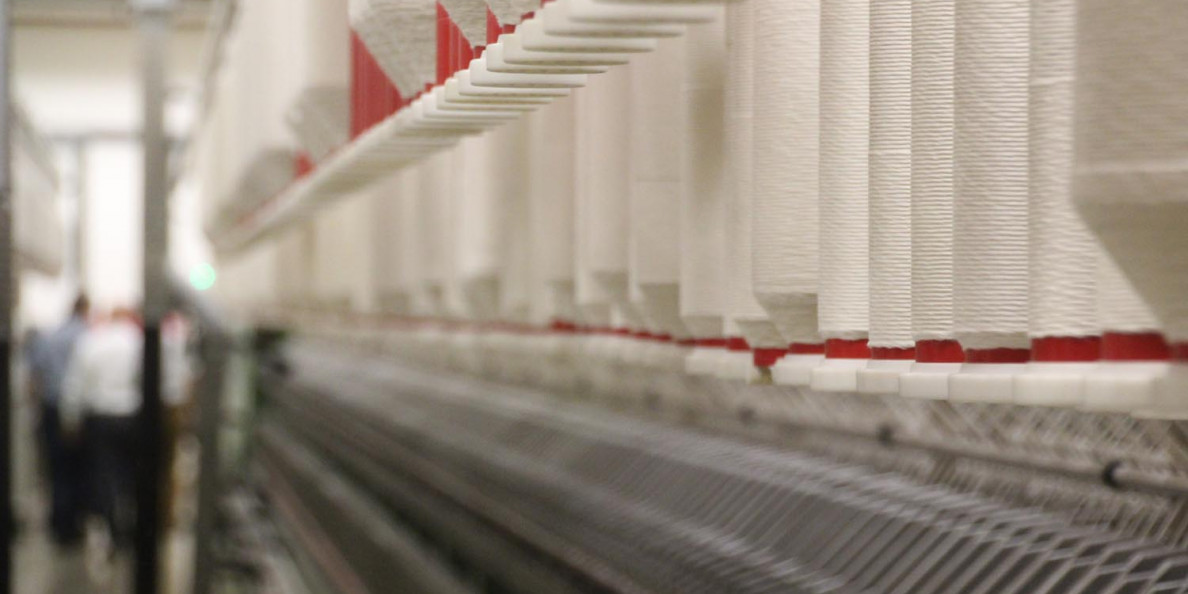U.S. cotton mill use—the volume of raw cotton processed into textiles—is estimated at 1.9 million bales for the 2023/24 marketing year (August–July).
If realized, cotton used by U.S. textile mills would fall to its lowest level in more than 100 years—since the 1884/85 marketing year, when approximately 1.7 million bales were used. U.S. cotton mill use has been mostly on a downward trend since the early 1940s when cotton use peaked during World War II. Soon after the end of the war, synthetic fibers were developed and began substituting for cotton.
Use of synthetics in the production of textiles continued to expand and further reduced cotton mill use through the early 1980s when the downward trend was dramatically reversed.

Promotion efforts and programs such as the Caribbean Basin Initiative and later the North American Free Trade Agreement (NAFTA) fostered U.S. cotton yarn and fabric production. U.S. cotton mill use rose, peaking again in the mid-1990s, before the World Trade Organization (WTO) Agreement on Textiles and Clothing began phasing out quotas on developed countries’ textile and apparel product imports.
By the early 2000s, cotton mill use in several countries—particularly China—expanded to take advantage of the phased-out quotas on cotton product exports to the United States.
Although U.S. raw cotton exports benefited from increased foreign mill demand, U.S. cotton mill use weakened, and the downward trend led to the near historically low 2023/24 U.S. cotton mill use projection.
This information is drawn from the USDA, Economic Research Service’s December 2023 Cotton and Wool Outlook.


